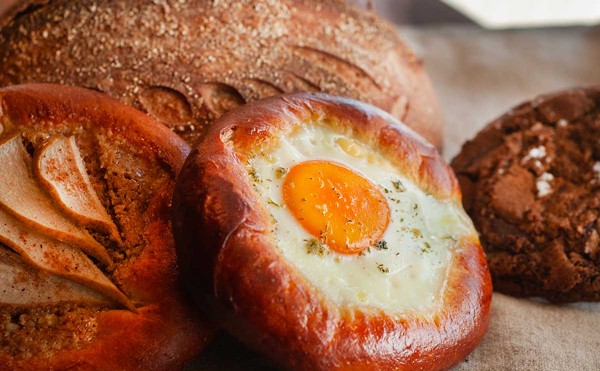There are two big mistakes that should be studiously avoided when giving gifts of kitchenware: falling for the hypnotic looks and claims of gadgets and gear that simply don’t work; and giving what could be regarded as nothing more than chore-oriented, domestic items to someone who’s not too hot on cooking.
I can’t help you with the second one — God help you if you do it.
But if your selection of recipient is right, I have some suggestions based on much personal experience with all manner of affordable kitchen stuff. The following are things I’ve used happily and successfully for varying periods of time in my own kitchen. I don’t think any of them are matters of personal taste. Very simply, they do what they’re supposed to do: They make cooking an easier and more pleasurable experience.
It probably goes without saying that virtually any copper cookware is among the grandest thing you can give an avid cook, and though it tends to be pricey, it’s pretty comparable to alternative types of fine pans, pots and other tools. Copper is by far the best conductor of even heat; its performance is predictable. The downside — one that puts off some cooks — is its maintenance needs. While some owners like the natural patina that forms on copper, others prefer its original, highly polished state, and this takes time and elbow grease. (A tip: Plain old ketchup works nearly as well as high-cost metal polish.) Also, the traditional tin lining occasionally needs to be redone, and there are only a few reliable places in the country that handle the chore. Copperware lined with stainless steel — another great heat conductor — is a trustworthy alternative.
I think the best gadget I’ve found in years, in terms of pure convenience, is the Buttermate. It stores a stick of butter and dispenses thin slices or accurately measured tablespoon-size pats with a push of the thumb. The guillotine-like wire slicer cuts cleanly and is easily used one-handed. Word’s gotten around about it in the last few years, and those few places that stock it (Hawthorne’s Kitchen Glamour, Organized Living and others) have a hard time keeping it in stock this time of year. But it’s also readily available from many online sources. The original Buttermate has a plastic body (about $10), but it also comes in chrome or brushed metal for a few dollars more.
Not just for physical enhancement anymore, silicone is taking over in the kitchen. Everything I’ve tried so far has earned a permanent place in my arsenal of constantly used cooking tools. It’s pliable, often colorful, heat resistant to about 500 degrees (dishwasher safe, of course), nonstick and used for spatulas in both old and innovative shapes, loaf and muffin pans, Bundt and other cake pans, trivets/hot pads/grippers, pastry and barbecue brushes, rolling pins, and no-slip mitts that allow you to reach into a pot of boiling water to retrieve corn, potatoes, lobsters, whatever. One of the first pieces of silicone kitchenware was the Silpat baking mat, a reusable, nonstick replacement for parchment paper used by professionals for years. Mine’s in constant use, cleans easily and suffers only in that you can’t use metal to cut on it.
Since I agree with the long-held professional opinion that the two most important tools in the kitchen are your hands and good cutlery, I’ve tried many types of knives and have settled on two favorites. While expensive ceramic blades can’t be beat for sharpness, my ardor for them cooled a lot the first time I broke one with just the slightest amount of lateral pressure (ceramic’s unforgiving in that). The two workhorses now are Messermeister’s 9-inch Meridian Elite chef’s knife with a Granton (scalloped) edge to reduce sticking. It’s truly razor-sharp right down to the very bottom of the heel, the German-made alloy steel takes an edge beautifully and holds it a very long time, doesn’t stain and can handle anything from slicing tomatoes (like butter) to slashing through hard squash or chopping chickens —and well worth the $85-$100 paid for a lifetime of reliable, pleasurable use. The other is a very inexpensive ($16) replica of a century-old, 7-inch French-made carbon steel “peasant knife” from Lee Valley Tools (leevalley.com). Updated with a resin-impregnated wood handle, it’s wicked-sharp, versatile and worth considering for the home cook who wants just one good knife to serve many tasks.
Finally, there’s the Microplane grater, which started out as a wood rasp and shaper sold in the Lee Valley hardware store, until the owner’s wife discovered in 1994 that it’s an incomparable food grater, whether for citrus zest, nutmeg, hard cheese, chocolate or anything else you’d normally run through a knuckle-busting box grater. Now produced specifically for food uses in a wide variety of styles (and there’s even another line for smoothing foot calluses), it’s without argument or question the best grater on the market today and available in any decent kitchenware section for around $8 and up.
Ric Bohy is the editor of Metro Times. Send comments to [email protected]




